RUSSELIA
Russelia
Jacquin, Enum. Syst. Pl.: 6. 1760; Carlson, Monograph of the genus Russelia (Scrophulariaceae) Fieldiana (Botany) 29(4): 243. 1957.
Plants somewhat woody, shrubby or scandent, with terete or angular stems, usually ridged and striate between ridges. Leaves exstipulate, opposite or verticellate. Inflorescence axillary, cymose, usually pedunculate and with one, two or more series of pedicels. Flowers actinomorphic, bisexual, hypogynous. Calyx deeply 5-parted, persistent. Corolla tubular to funnelform, irregular, upper lip emarginate, lower lip 3-lobed. Stamens 4, didynamous, inserted 1-2 mm above the base of corolla; staminode usually short. Carpels 2, syncarpous; ovary 2-locular, many ovules per loculus, placentation axile. Fruit a globose capsule, loculicidally dehiscent, with enlarged placentas bearing numerous hairs among the many, small, wingless seeds.
48 species
Russelia equisetiformis
Russelia equisetiformis
Schltdl. & Cham., Linnaea 6: 377. 1831; Carlson, Monograph of the genus Russelia (Scrophulariaceae), Fieldiana: Botany (4): 244. 1957; keralaplants.in; R. juncea Zucc., Flora 15, Beibl. 2: 99. 1832.
Plants perennial, erect, ca. 1 m tall, suffruticose, profusely branched, rush-like (Equisetum like), branches verticellate below, opposite above, spreading; stems green, glabrous, 4-12- angled, with prominent ridges and grooves between them, upper stems very slender; internodes 5-7 cm long. Lower leaves verticellate, 3-6 in a whorl, 2.5-15 mm x (1.5-)5-9 mm, ovate, oblong or elliptic, acute, entire; upper leaves smaller, opposite, linear, entire, ca. 2 mm long; both surfaces glabrous with few circular resinous dots, veins not prominent; petioles +/- 3.5 mm long, often remaining appressed to stem, even after when leaves fall. Inflorescences near top of plant, opposite or verticillate, open cymes or panicles; flowers paired, solitary or dichasial, actinomorphic, bisexual, hypogynous, scarlet (ivory white or pink in some cultivars). Bracts small, linear, with few or no resinous dots; peduncles 2-4 cm long; pedicels 0.6-1.5 cm long, both slender and glabrous. Calyx campanulate; lobes 5, broadly ovate, no resinous dots, not spreading. Corolla tubular, scarlet, 1.5-2.5 cm long, outer surface glabrous; limb small, 7-8 mm across, 2-lipped; upper lip deeply notched (2-lobed), lobes 2.5 mm x 2.5 mm; lower lip 3-lobed, lobes 3 mm x 3 mm. Stamens 4, didynamous, inserted at the base of corolla tube; filaments (12-)15-18 mm long extending to mouth of corolla tube, included, glabrous; anthers ca. 1 mm long, orbicular, divaricate or somewhat pendulous; staminode minute, ca. 0.5 mm long, triangular. Carpels 2, syncarpous; ovary ca. 3 mm x 2 mm, bilocular, axile placentation, ovules many; style 15-16 mm long; stigma simple or shallowly bilobed.
Capsule globose, 3-6 mm in diameter, enclosed by persistent calyx; style persistent. Seeds small, oval, warty, light brown, among white hairs which fill the capsule. (Mature capsule and seeds not observed)
Common Names: Fire Cracker Plant, Fire Cracker Flower, Coral Blow, Coral Bush, Coral Fountain, Coral Plant, Fire Cracker Fern, Fountain Bush, Fountain Plant, Madeira Plant
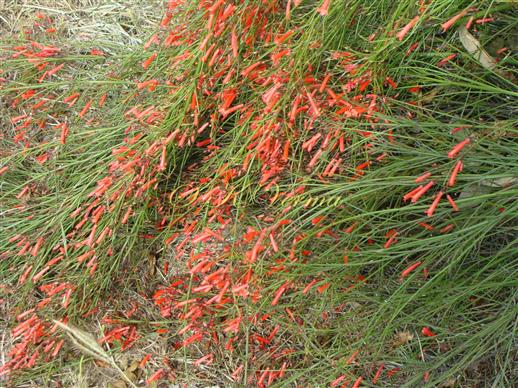
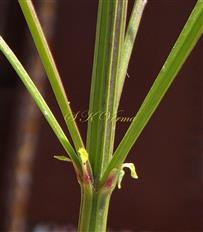
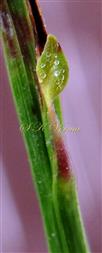
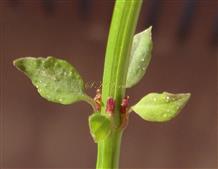

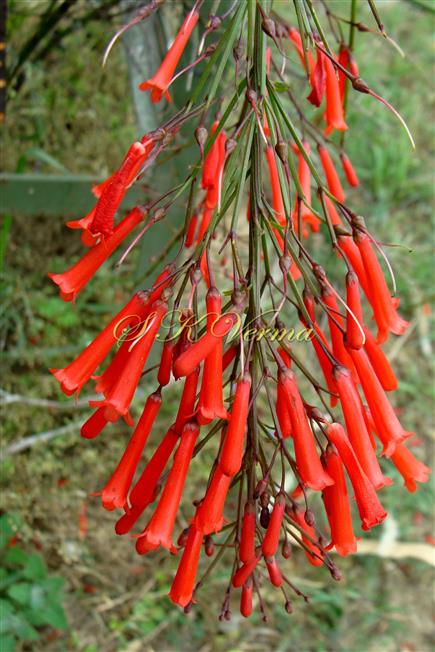
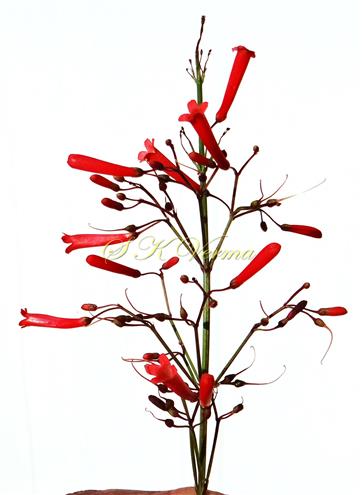
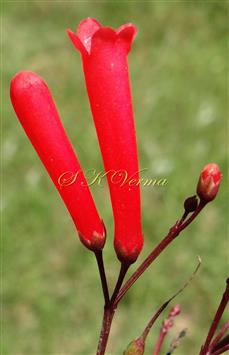
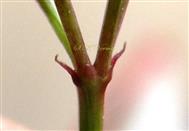
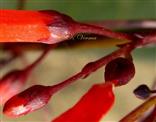
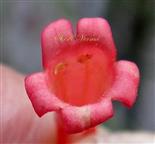
 and staminode (1)-4925.jpg)
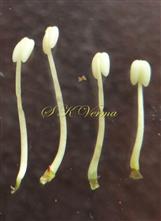
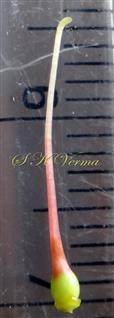

.jpg)
-1017-(From Mahableshwar).jpg)
.jpg)
.jpg)
.jpg)





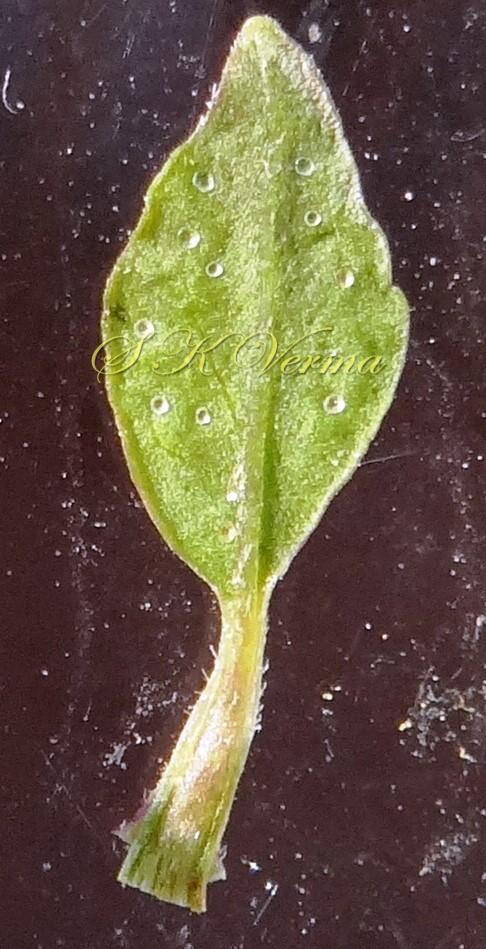






 and staminode (1)-4925.jpg)



.jpg)
-1017-(From Mahableshwar).jpg)
.jpg)
.jpg)
.jpg)